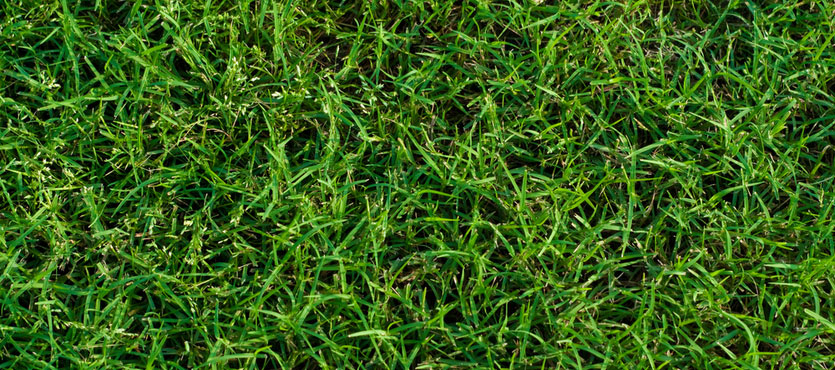Bermuda Grass is popular here in Florida because it can successfully endure the scorching sunny days and minimal rain that every enjoys. Bermuda Grass is a great choice for Florida lawns, growing low to the ground, and promising to remain robust and beautiful even with heavy foot traffic from humans and pets. As an added bonus, Bermuda Grass is fairly easy to take care of – with the appropriate among of water, mowing, and aeration – here’s how!
About Bermuda Grass
Bermuda Grass is a perennial, which means it typically doesn’t need re-seeding like some other lawn grass choices. It offers a pleasing green hue with a fine texture making it the popular choice for putting greens and your lawn. Bermuda Grass comes in multiple varieties that offer varying benefits for lawns – from color to wear tolerance to climate to mowing height – it’s easy to find the Bermuda that’s right for you and your lawn. Whatever variant you select, this hardy grass requires minimal maintenance; can tolerate drought, heat, and extreme sun conditions; and produces uncompromising growth. The grass’s only downsides – its brown color in winter and its intolerance to shade.
Caring for Bermuda Grass Properly
Watering Your Bermuda Grass Lawn – As you know, no matter your grass selection, you’ll need to water it regularly to keep it growing, healthy, and green. While rainwater is the preferential way to water your lawn, it’s not always practical or predictable, which means you’ll need to turn to a man-made solution. Your Bermuda Grass, as a drought resistant grass should only need watering once or maybe twice per week. You’ll know when its time to water because the grass blades will stoop or bend down. By watering only when needed, you’ll help your Bermuda lawn grow strong, deep roots and maintain its health and beauty. Six inches is the optimum water depth for your Bermuda Grass to be properly saturated.
Mowing Your Bermuda Grass Lawn – Bermuda Grass is often falsely accused of being a difficult grass to mow, but in reality, the fault is with the choice of lawn mower. Why? Bermuda Grass needs to be cut to a height of one to one and a half inches which most lawn mowers simply are incapable of without scalping the lawn. If you’ve seen that awful half-moon aberration on your lawn, you know where the scalping and injury occurred. To avoid harming your Bermuda lawn, you will need to invest in a Reel mower which promises a more even cut, closer to the ground, and will never scalp your Bermuda. If you stick with your traditional mower, you’ll need to raise your blade to avoid damaging your lawn, which means you won’t be able to achieve that classic low, manicured cut for which Bermuda grass is famous. Either way, Bermuda Grass should never be cut more than a third of its total height or it will be stressed and primed for further damage.
And one more tip, you don’t need to bag Bermuda Grass when mowing. Leaving the clippings to naturally decompose will restore nitrogen levels and keep your lawn fertilized and healthy.
Aerating Your Bermuda Grass Lawn – Aeration, the poking of holes into the soil of your lawn, should be performed once annually, early in the summer, to keep your lawn looking great. Since you only need aerate your Bermuda lawn once a year, renting a core aerator is often the best option. This aerator pulls up soil plugs as you move it over your yard. You’ll need to go over the lawn twice, first in one direction, followed by a second pass at a 90-degree angle to the first pass, making a crisscrossing pattern. Once complete, apply the proper fertilizer and water thoroughly. By aerating in early summer, when your lawn experiences its most aggressive growth, the nutrients – oxygen, water, and others – will be able to reach the roots.
Given the proper care, your Bermuda Grass Lawn will flourish, but when you need assistance with lawn care, call on the specialists at Xtreme Landscaping to come to your aid!

